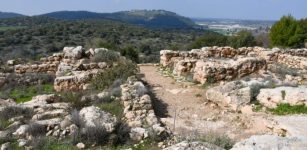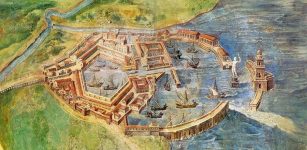Discovery Of Fortified Villages And Earthworks Re-Writes Ancient History Of Amazon
AncientPages.com - It has long been assumed that large many parts of the Amazon were uninhabited because people didn’t want to live far from major rivers. However, a startling discovery reveals that there were hundreds of villages in the rainforest and areas that were believed to have been uninhabited were in fact home to thriving populations of up to a million people.
The rainforest was home to different communities speaking varied languages who had an impact on the environment around them.
An aerial photo of one of the structures at Jacó Sá site. Credit: University of Exeter
Archaeologists from the University of Exeter found the remains of fortified villages and mysterious earthworks called geoglyphs - human-made ditches with strange square, circular or hexagonal shapes. Experts still don't know the purpose of these earthworks, as some show no evidence of being occupied. It is possible they were used as part of ceremonial rituals.
By analyzing charcoal remains and excavated pottery, scientists estimate that a 1,800 km stretch of southern Amazonia was continuously occupied from 1250 until 1500 by people living in fortified villages. There could have been between 1,000 and 1,500 enclosed villages in the region and two-thirds of these sites are yet to be found.
See also:
Calçoene – Amazon Stonehenge And The Mysterious Amapán Megalithic Culture
Mysterious Manuscript 512 Reveals Lost Ancient City Hidden In The Amazon Jungle
Were Mysterious Ancient Man-Made Earthworks In The Amazon Forest Ritual Communication Spaces?
Interestingly, many of these ancient villages were found nearby, or inside the geoglyphs. Researchers think they were connected through a network of causeways and some have been elaborately constructed over many years.
The earthworks were probably made during seasonal droughts, which allowed forests to be cleared. Drier areas still had fertile soils, where farmers would have been able to grow crops and fruit trees like Brazil nuts.
Archaeologists used satellite imagery to find archaeological sites in the Amazon’s upper Tapajós Basin. Credit: University of Exeter
“There is a common misconception that the Amazon is an untouched landscape, home to scattered, nomadic communities. This is not the case. We have found that some populations away from the major rivers are much larger than previously thought, and these people had an impact on the environment which we can still find today,” Dr Jonas Gregorio de Souza, from the University of Exeter's Department of Archaeology said.
Huge parts of the Amazon are still unexplored by archaeologists, but this latest discovery fills a major gap in the history of the Amazon.
AncientPages.com
Expand for referencesUniversity of Exeter






















